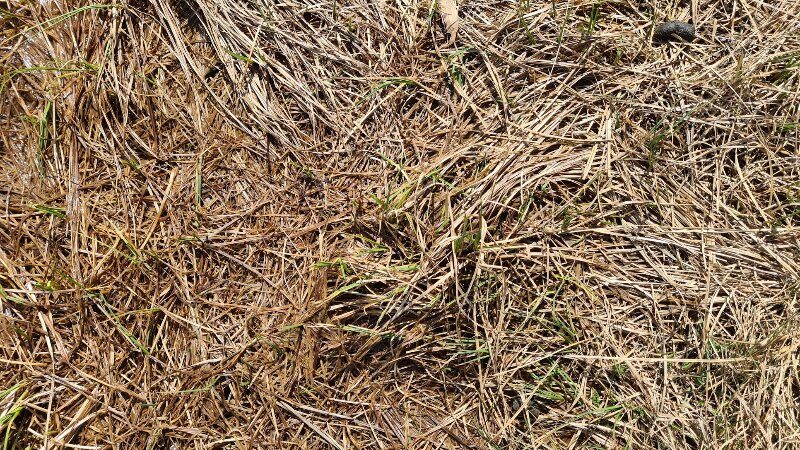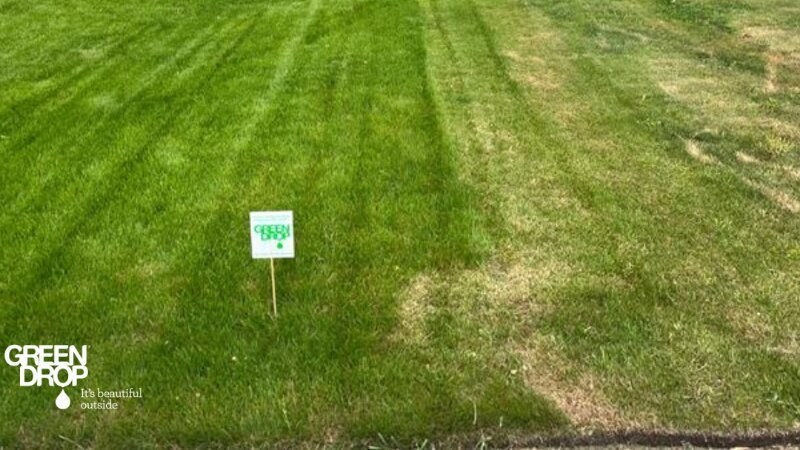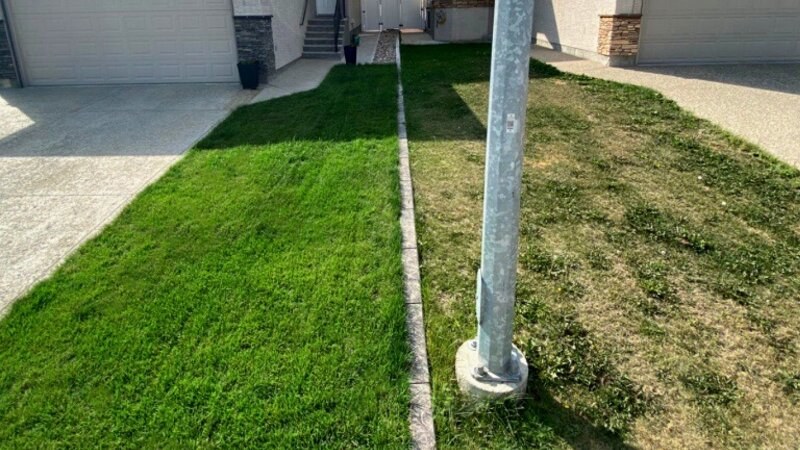Why Does My Lawn Have Brown Patches
Reading time: 5 minutesBrown patches on your lawn are as unwelcome as unsolicited advice at a family dinner. If you think it’s because of a lack of watering, think again. There are many reasons for these patches to show up.
Today, we’re going through the what, why, and how of managing brown patches on your lawn.

Common Causes of Brown Spots on Lawns
Various villains, from different types of fungus to invading pests, can turn your lush lawn into a patchwork puzzle. Let’s discuss the most common ones and learn how to spot them.
Brown Patch Fungus
This fungus thrives in high humidity and temperatures between 21-32°C. It manifests as circular patches of brown, wilted grass, often with a smoky ring at the edges during mornings. It's particularly aggressive in lawns with excess nitrogen.
Dollar Spot
Recognizable by small, silver-dollar-sized (hence the name) tan or straw-coloured spots. It prefers moist conditions and affects lawns with low nitrogen levels. Early morning dew can reveal cobweb-like mycelium on these spots.
Fusarium Blight
Targets stressed lawns during hot, dry conditions. It creates circular patches that start green at the center, giving a "frog-eye" appearance. Proper watering and avoiding high-nitrogen fertilizers during peak summer can help prevent it.
Pythium Blight
Fast-moving and destructive during hot, humid nights, this fungus can kill large grass areas overnight. It leaves a greasy, water-soaked appearance, often following the water drainage pattern across the lawn.
Grubs (Beetle larvae)
These root-munching larvae of various beetles, including Japanese beetles and June beetles, cause grass to yellow, wilt, and easily detach from the soil. A healthy lawn can typically support a moderate grub population without damage, but severe infestations require treatment.
Chinch Bugs
Small bugs suck the sap from grass blades, injecting toxins that block water transport within the grass, leading to yellow and then brown patches. They thrive in hot, dry conditions and are most active in mid-summer.
Sod Webworms
The larvae of lawn moths, these caterpillars chew off grass at the base, leading to thin, brown patches in the lawn. They are most active during warm evenings. Look for small, greenish caterpillars or the moths themselves, which flutter up when disturbed.

Other Common Causes of Brown Spots
While fungus and pests are perhaps the most common reasons your lawn goes brown, there are other factors at play.
- Inadequate Watering. Both under-watering and over-watering your lawn can lead to brown patches. Too little water, your grass will dry out. Too much, and the roots can rot. You have to find that Goldilocks zone for watering.
- Soil Compaction. You’ve probably noticed your lawn going brown in high-traffic areas. This is because of soil compaction, which makes it difficult for roots to grow. Water and nutrients also find it hard to find their way through the soil.
- Poor Drainage. If there are areas in your lawn that are pooling water, diseases can set in. Too much water can also suffocate the grassroots, causing it to wither.
- Excessive Heat and Sun. Prolonged exposure to high temperatures and direct sunlight can stress the grass, leading to scorched, brown areas. Who knew that your lawn could get a sunburn, too?
- Chemical Damage. Last but not least, some herbicides and other chemicals can kill grass, leading to brown batches. Be careful about what you’re putting on your lawn.
Check out this hard line between a subscriber's healthy turf and a non-subscriber’s lawn!

Tips to Beat Brown Patches on Lawn
Trying to get rid of brown patches on your lawn can feel like a never-ending battle. But don’t throw in the trowel just yet! With the proper techniques, you can turn the tide against these unsightly spots. Here are some tips to help your lawn recover its vibrant green.
Proper Watering Techniques
Watering your lawn is less about following a strict schedule and more about observing your grass’s needs. The goal is to quench your lawn’s thirst without drowning it.
Aim for deep, infrequent watering sessions early in the morning. This will allow water to penetrate the soil and reach the roots rather than a light sprinkle that barely wets the surface. This approach encourages strong root growth and reduces the risk of fungal diseases.
Aeration and Dethatching
Think of aeration as giving your lawn room to breathe. Over time, the soil becomes compacted, making it hard for water, air, and nutrients to circulate. By aerating your lawn, you create small holes in the soil that improve drainage and reduce compaction.
Dethatching removes the thick layer of dead grass and roots that can suffocate your lawn, essentially clearing the way for it to flourish.
Fungicide Application
Fungicides can be a game-changer, but they're not always a one-size-fits-all solution. Consider them the special forces of your lawn care arsenal, to be deployed wisely and sparingly.
Apply fungicides at the first sign of disease, following label directions to the letter. Remember, the best offence is a good defence. Preventive applications in early spring or fall can keep fungi at bay.
Pest Control
If pests are killing your lawn, it’s time to fight back. Start with natural predators and organic methods to maintain the balance in your garden's ecosystem.
If chemical interventions become necessary, opt for targeted treatments rather than blanket applications. Remember, a little goes a long way in keeping your lawn pest-free without tipping the environmental scales.
Fertilization
If your lawn lacks the proper nutrients it needs for healthy growth, it will not be able to fight back against pests and diseases. Think of it as a bespoke suit for your soil. Make sure it’s a perfect fit to meet your lawn’s unique nutritional needs. The Green Drop fertilization plan consists of all of the food your lawn needs to thrive.
Green Up Your Lawn with Green Drop
Everyone wants a green lawn. Unfortunately, the battle against brown patches is often long and daunting. With the proper care, attention, and a touch of expertise, those brown patches can become a thing of the past.
Enter Green Drop, your trusted ally in lawn care excellence. Our GreenKeepers are experts at diagnosing those perplexing brown patches and crafting a personalized care plan for you.
Don't let lawn troubles dampen your outdoor enjoyment. Reach out to us today and take the first step toward a greener tomorrow.
We serve Calgary, Edmonton, Red Deer, Regina, Saskatoon, and Winnipeg. Let us help you turn your lawn care woes into wows.

